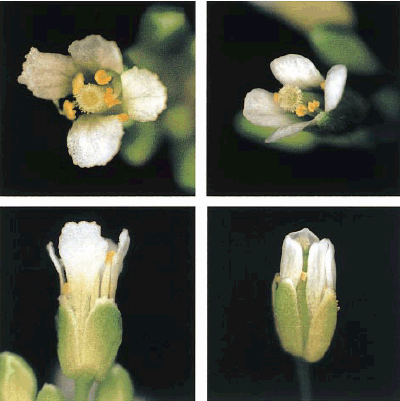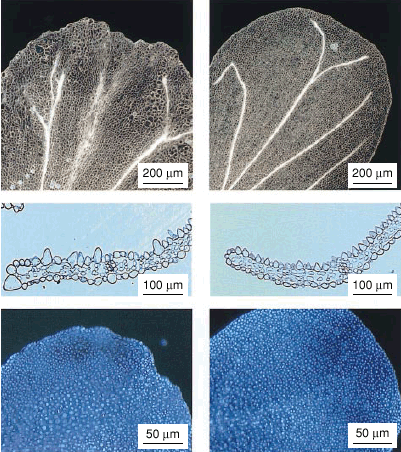By ion-beam irradiation, we successfully isolated a mutant defective in the gene that functions in determining the petal shape. Until now, many developmental mutants were isolated in Arabidopsis but such a mutation that specifically changes the petal shape has not been reported before. However, the frill1 (frl1) mutant, which has serrated petals and sepals, was first isolated (Fig. 5-12). It was shown that FRL1 gene acts in the later stages of petal development after petal primordia formation (Fig. 5-13). This suggests the possibility that we can freely change the petal shape in future by detailed analysis of the FRL1 gene.
Using the ion beam irradiation facility (TIARA) commissioned in 1993 for R/D on material and biological science, various novel mutants have been isolated. For example, chrysanthemum mutants that have complex and/or stripe types of floral color, UV-light resistant Arabidopsis mutants, and an Arabidopsis mutant with a high pigment accumulation in the seed coat. These mutants, which have not been isolated by other methods, were obtained by ion beam irradiation for the first time. And now, we succeeded in isolating the frl1 mutant. |

